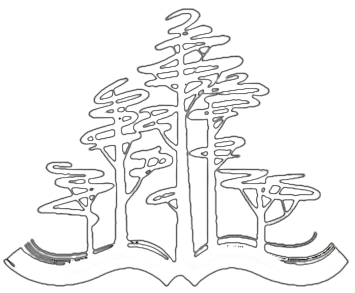Summer School on the Russian Literature. 2024.
№ 1
The paper considers Russian translations of the fragment about Orpheus and Eurydice from Virgil’s „Georgics“, published in the first quarter of the 19th century. These translations exemplify the
evolution of literary translation in Russia, from free adaptations based on French intermediary texts to accurate equilinear translations intended to represent the characteristic features of the original text.
Keywords: Virgil, „Georgics“, poetical translation.
evolution of literary translation in Russia, from free adaptations based on French intermediary texts to accurate equilinear translations intended to represent the characteristic features of the original text.
Keywords: Virgil, „Georgics“, poetical translation.
Aleksandr Volkov
„Orpheus in the Hyperborean Snows“ (from the history of Russian translations of Virgil in the first quarter of the 19th century)
The article gives an overview of the pedagogical activities of the Russian symbolist poet Viacheslav Ivanov
(1866–1949) in literary circles and societies of St. Petersburg and Moscow between 1909 and 1920, where he taught versification to younger poets. This gave Ivanov important experience and served as a prelude to his later courses on this topic for students at the university level. The focus of the analysis is on stanzaic forms, as discussed in the lectures on historical and theoretical poetics that Ivanov gave at the Azerbaijan State University in Baku (1922; repeated in 1923–1924).
Keywords: Viacheslav Ivanov’s lectures on Poetics at the Azerbaijan State University in 1922, literary circles and societies.
(1866–1949) in literary circles and societies of St. Petersburg and Moscow between 1909 and 1920, where he taught versification to younger poets. This gave Ivanov important experience and served as a prelude to his later courses on this topic for students at the university level. The focus of the analysis is on stanzaic forms, as discussed in the lectures on historical and theoretical poetics that Ivanov gave at the Azerbaijan State University in Baku (1922; repeated in 1923–1924).
Keywords: Viacheslav Ivanov’s lectures on Poetics at the Azerbaijan State University in 1922, literary circles and societies.
Konstantin Lappo-Danilevskii
Viacheslav Ivanov as a Teacher of Versification (Stanzaic Forms)
The article is devoted to the influence of Taoism on the texts of the avant-garde writer and painter Elena Guro (1877–1913). Using the comparative method, the attempt is made to define Guro’s most important textual strategies stemmed from the Eastern philosophical tradition. Under examination are the Taoist principles such as naturalness, simplicity, and non-action manifested in the motifs of fate, wind, and crane, as well as the images of the free creator, lazy poet, and „the world’s mother“ in Guro’s letters and writings („The Hurdy-Gurdy“ (1909), „The Autumn Dream“ (1912), „Little Camels of the Sky“ (1914), the unfinished novel „The Story of the Poor Knight“).
Keywords: Russian modernist literature, comparative studies, the works of Elena Guro, the philosophy of futurism, Taoist motifs and images.
Keywords: Russian modernist literature, comparative studies, the works of Elena Guro, the philosophy of futurism, Taoist motifs and images.
Darya Kozhachkina
„Soon, my long journey will begin…“: Writings of Elena Guro and Taoism
The article examines the source of the epitaph on the grave of Irakli Luarsabovich Andronikov’s grandfather, a prominent figure in Russian education, Yakov Grigorievich Gurevich. It has been established that the epitaph „I did not extinguish the sacred fire“ is a modified version of the epigraph to the poem by I. A. Bunin, known under the names „On the Day of Judgment“ and „Beyond the Tomb“. The poem does not have an autograph and was first published in 1907 The epigraph „I did not quench the sacred fire“, as is known from the author’s text, is taken from the 125th chapter of the Egyptian Book of the Dead. It is shown that Bunin’s poem is a contamination of information from ancient authors about Sirius, a line from the 125th chapter of the Book of the Dead and a description of the illustration in the manuscript of the Book of the Dead, which belonged to a nobleman of the 13th century BC Ani. It has been established that Bunin could have used the publication by E. Budge of 1890 or 1895 with translation into English. The analysis shows that the context of the poem is connected with the suffering of the poet, who in 1905–1906 suffered tragic events in his personal life. It was determined that this epitaph appeared on the grave of Ya. G. Gurevich at the behest of his daughter L. Ya. Gurevich. Bunin’s poem was published on the next page with her play in the magazine „Russian Thought“ № 3 for 1907 and she liked it to symbolize her father’s mission as Prometheus, who did not drop his sacred fire.
Keywords: Ya. G. Gurevich, L. Ya. Gurevich, I. A. Bunin, Book of the Dead, E. Budge, Ani.
Keywords: Ya. G. Gurevich, L. Ya. Gurevich, I. A. Bunin, Book of the Dead, E. Budge, Ani.
Vladimir Emelianov
About the Origin of the Epitaph on the Grave of Yakov Grigorievich Gurevich
The article is devoted to a comparative analysis of the book by I. A. Bunin’s „Temple of the Sun“ (1917) and Middle Eastern travelogues about the journey to the Holy Land by Pierre Loti: „The Desert“ (1895), „Jerusalem“ (1895), „Galilee“ (1896). Bunin carefully read Loti's travelogues; from him he learned the ideological focus on exoticism and stylistic techniques of impressionistic poetics. The article makes only the first attempts to describe the complex relationship between Bunin the reader and the texts of Pierre Loti.
Special attention is paid to the biography of Pierre Loti (1850–1923) and the features of his literary career. The French writer, very famous during his lifetime, was quickly forgotten after his death. In particular, Loti was very popular in Russia at the end of the 19th — beginning of the 20th centuries. His literary influence on Russian travelogue remains to be assessed.
Keywords: I. A. Bunin, Pierre Loti, travelogues, East, Holy Land, exoticism, poetics.
Special attention is paid to the biography of Pierre Loti (1850–1923) and the features of his literary career. The French writer, very famous during his lifetime, was quickly forgotten after his death. In particular, Loti was very popular in Russia at the end of the 19th — beginning of the 20th centuries. His literary influence on Russian travelogue remains to be assessed.
Keywords: I. A. Bunin, Pierre Loti, travelogues, East, Holy Land, exoticism, poetics.
Maksim Shavlinsky
„Temple of The Sun“ by I. A. Bunin and Travelogies about The Holy Land by Pierre Loti
The paper is paying attention to V. V. Nabokov’s play „The Waltz Invention“. This work examines the features of drama’s time and place, structure’s influence to the plot. Nabokov constructs the text in such a way that the recipient has a feeling of a „double reality“. In the sense that it doesn’t gift the unambiguous interpretation of events. The place consists elements of main character’s memories, his fantasies and absurdity. The reality’s device can be like peculiarities of a person’s somnambulistic state.
Keywords: Nabokov, time and place, illusion, dream, falsification of reality, flashbacks.
Keywords: Nabokov, time and place, illusion, dream, falsification of reality, flashbacks.
„Fainting pulsation of Reality“ in V. V. Nabokov’s play „The Waltz Invention“
Evelina Shipunova
Contacts
summerschool@list.ru
В оформлении сайта использованы материалы Freepik.


